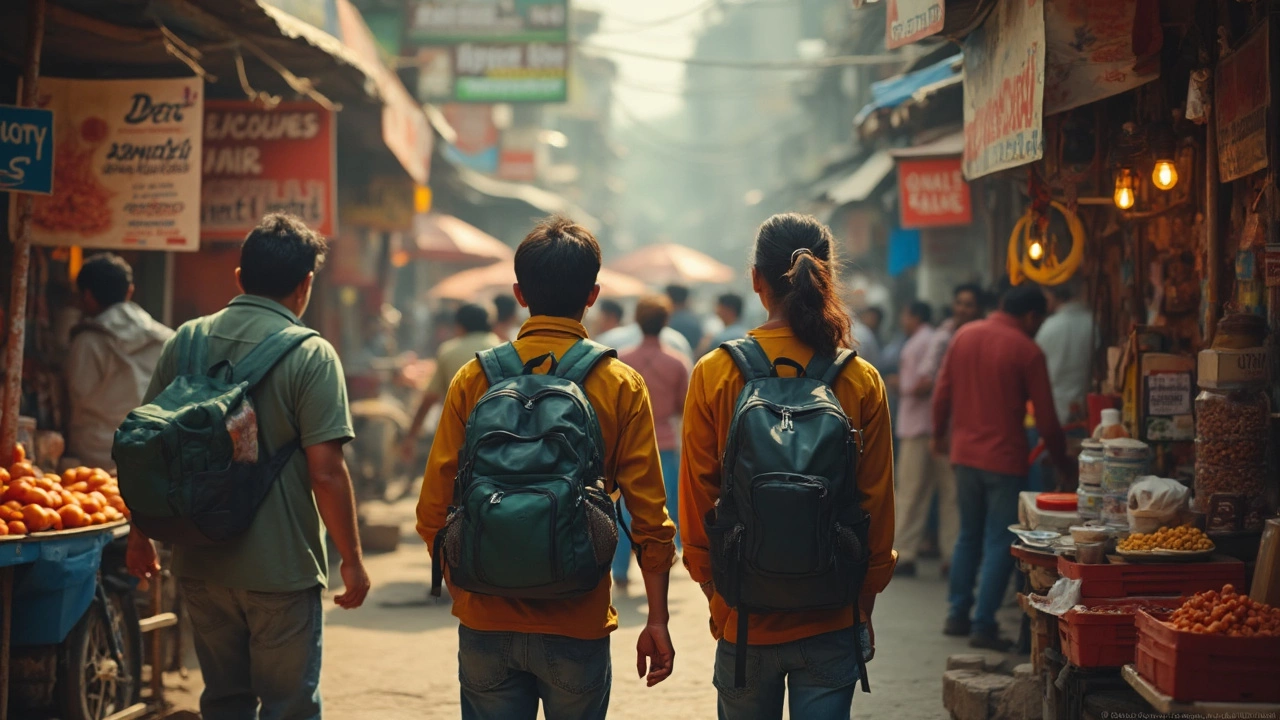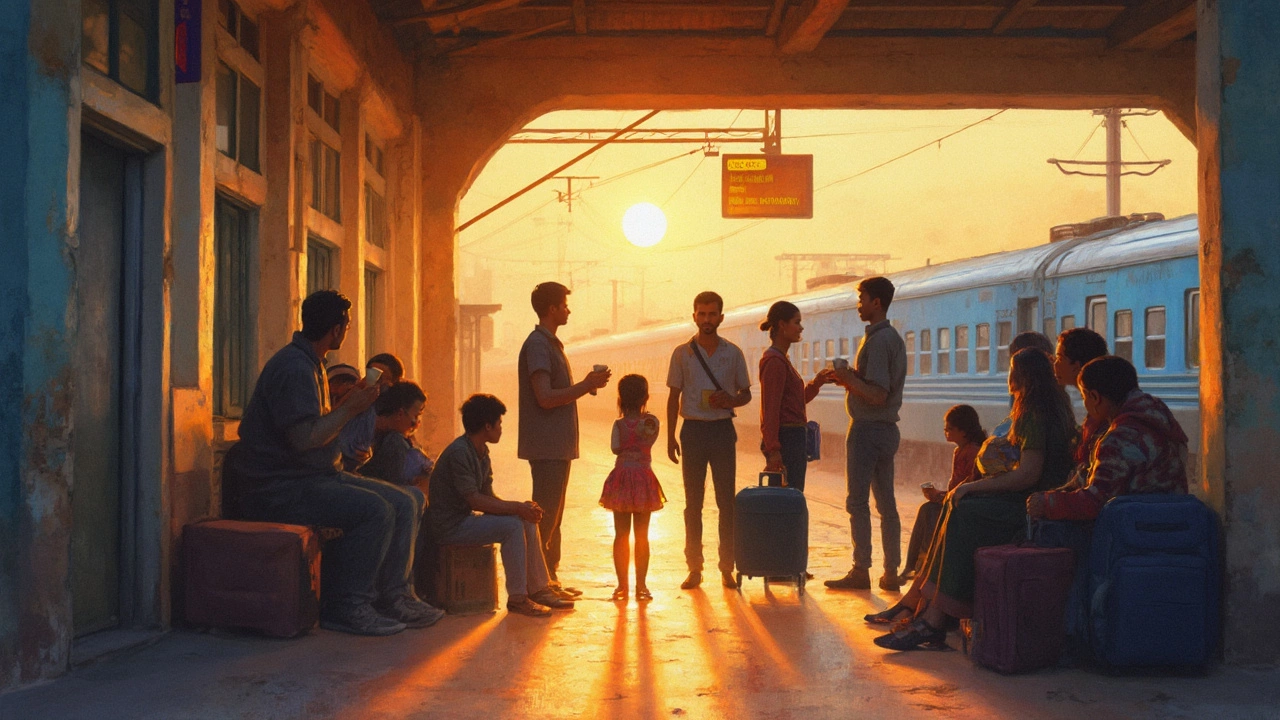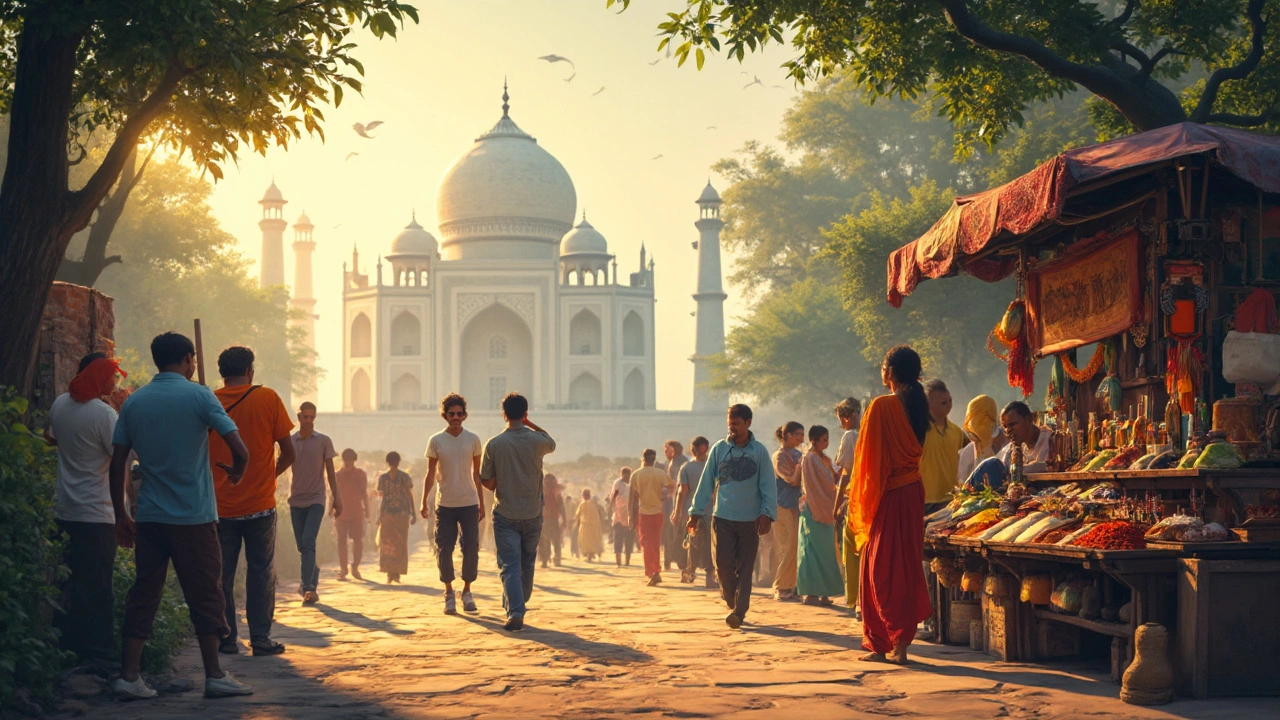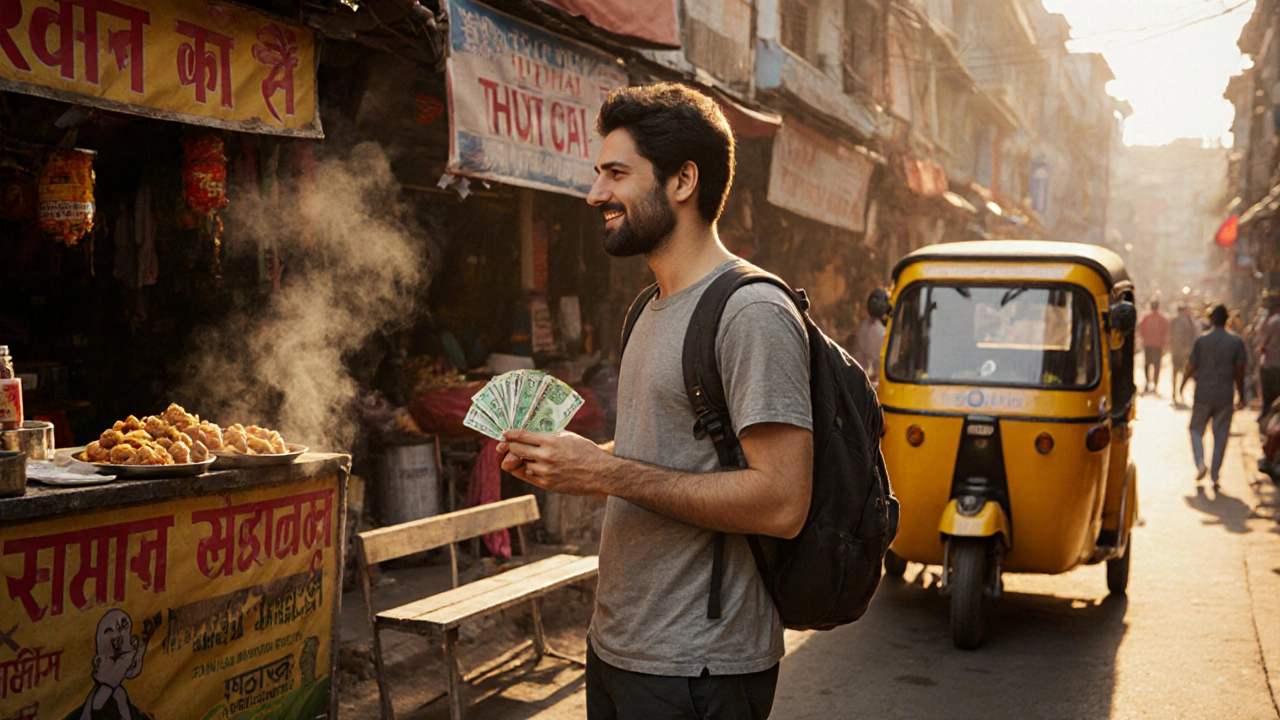Is India Expensive for Tourists? The Real Cost Breakdown

Picture this: Spicy street food for a dollar, a bed for the price of a coffee back home, and train rides that show you the whole country without killing your wallet. That's the story most backpackers hear about India, but is it the full picture?
The truth is, India can be dirt cheap or sneakily expensive, depending on how and where you travel. In some cities, you can live like a king on a shoestring. In others, especially tourist hot spots, you’ll pay a premium just to get a decent meal with clean water. Your experience really depends on your choices—do you stick to hole-in-the-wall places or crave air-conditioned comfort?
So before you start planning every detail, let’s get real about what things actually cost and when India might surprise you with an unexpected bill. If you’re coming in with a tight budget, you’ll want to know the tricks of the trade—plus what to avoid, so you don’t end up spending double for the same thing. Here’s the need-to-know on India’s true travel costs.
- Why India's reputation varies
- Breaking down daily expenses
- When does India get pricey?
- Eating and sleeping on a budget
- Regional cost differences
- Smart ways to save money
Why India's reputation varies
Ask ten travelers about whether India travel cost is high or low, and you’ll get ten different answers. Some call it a backpacker paradise; others claim they burned through cash faster than they expected. A big reason is that India trip expenses swing wildly based on your style of travel, the cities you visit, and what comforts you’re unwilling to compromise.
Let’s be honest: the sheer size of India makes a one-size-fits-all answer impossible. Cities like Mumbai or Delhi have five-star hotels rubbing shoulders with budget guesthouses, and price tags that match. Meanwhile, smaller towns or rural areas might charge almost nothing for a bed and a meal.
Another reason? There’s a gap between "tourist prices" and local prices. Foreign tourists often pay more for things like monuments, rickshaws, and even market items. For example, Taj Mahal entry costs 50 INR for locals, but 1,100 INR for foreigners. Tourist hotspots tend to inflate everything from bottled water to WiFi.
If you stick to local transport (like trains and public buses), eat where locals eat, and sleep in basic guesthouses, budget travel India is easy on the wallet. Want air conditioning, western food, or instant coffee from a chain? That’s where you’ll start paying more, sometimes for less value than you’d expect.
Here’s a quick breakdown to show just how different costs can be:
| Item | Local Price (INR) | Tourist Hotspot Price (INR) |
|---|---|---|
| Street Food Meal | 50-100 | 150-400 |
| Basic Hostel Bed | 300-500 | 700-1,500 |
| Day Train Ticket (Sleeper) | 120 | 120 |
| Taj Mahal Entry | 50 | 1,100 |
So, stories about both ultra-cheap India travel cost and unexpected expenses are true. It all comes down to your personal choices, destination, and how much you blend in with local life.
Breaking down daily expenses
If you’re thinking about your daily India travel cost, it pays to get specific. Here’s what you can expect to spend on the basics—food, accommodation, transport, and sightseeing—so you don’t get caught off guard.
- Accommodation: Hostels can start as low as 300 INR ($3.50 USD) a night in smaller cities. In big cities like Delhi or Mumbai, you’ll pay more—around 700–1200 INR ($8–$15 USD) for a clean dorm or budget guesthouse. Expect a private room at a no-frills hotel to start near 1,200 INR and go up from there.
- Food: Street food is ridiculously cheap. You can fill up for 50–100 INR ($0.60–$1.20 USD) per meal if you stick to local spots. A basic restaurant meal bumps you up to 200–300 INR ($2.50–$3.50 USD). Western food and fancy cafes? You’ll pay 500 INR ($6 USD) or more.
- Transport: Intercity trains in sleeper class are a bargain—1000 km for about 600–800 INR ($7–$10 USD). Buses are even cheaper, but not as comfy. In town, rickshaw rides can cost 50–150 INR ($0.60–$1.80 USD), depending on distance and your haggling skills. Ride-sharing apps like Ola can sometimes be even cheaper for short trips.
- Sightseeing: Entry to famous sights can be surprisingly high for foreigners. The Taj Mahal, for instance, is 1,100 INR ($13 USD). Lesser-known monuments and temples usually charge between 100–300 INR, and lots of amazing places are free.
Check this out for a quick daily budget estimate:
| Expense | Low-budget | Mid-budget |
|---|---|---|
| Accommodation | ₹300–700 | ₹1,200–2,000 |
| Food | ₹150–300 | ₹400–900 |
| Transport | ₹100–250 | ₹400–800 |
| Sightseeing | ₹0–300 | ₹300–1,000 |
All said and done, a backpacker can get by on about 1,000–1,500 INR ($12–$18 USD) per day if they’re careful. If you want more comfort and don’t want to think twice about the occasional splurge, aim for 2,500–4,000 INR ($30–$48 USD) per day. If you’re burning cash on fancy hotels or lots of flights, there’s technically no upper limit.
When planning your India trip expenses, expect the biggest swings on accommodation and sightseeing. The rest—food and getting around—can stay pretty low as long as you’re not craving western chains or private drivers all the time.
When does India get pricey?
People often hear that India travel cost is rock bottom, but it’s not always true—especially if you stick to the beaten tourist track. There are times and places where your rupees vanish fast. Let’s break down what can drive prices up so you know when to plan, bargain, or skip.
- Peak Seasons: Prices in Goa, Kerala, and Rajasthan during Christmas and winter skyrocket. Accommodations that cost $10 in July can jump to $40 a night in December. Even overnight trains and buses get booked out, so you’ll end up having to pay more or settle for worse.
- Tourist Hotspots: Agra (for the Taj Mahal), Jaipur, and Varanasi know they have what foreigners want and often double prices for everything from rickshaws to water bottles. You’ll even see “foreigner” pricing at tourist sites. The Taj Mahal, for example, costs 50 INR for locals and 1,100 INR for tourists as of early 2025.
- Upscale Comforts: If you want air conditioning, western toilets, or a clean, modern hotel in a city like Mumbai or Delhi, expect to pay way more than the backpacker crowd. A mid-range hotel in Mumbai can easily hit $60 a night.
- Transport Upgrades: India’s trains are legendary, but an air-conditioned class ticket between cities costs 4-6 times more than sleeper class. Domestic flights are cheap if booked early, but last-minute fares during holidays can be double.
- Scams and Commissions: In major cities, some taxi and rickshaw drivers, as well as travel agents, mark up prices for tourists—sometimes by as much as 200%. If you don’t negotiate or use an app, you’ll pay top dollar.
| Expense | Budget Option (INR) | Tourist Hotspot (INR) |
|---|---|---|
| Hotel (per night) | 800 | 3500 |
| Meal | 80 | 300 |
| Taj Mahal Entry | 50 (Indian) | 1100 (Foreigner) |
Another tip: public holidays like Holi and Diwali drive prices up in cities like Varanasi and Jaipur, both for rooms and rickshaws. If your trip lines up with a major festival, book ahead or prepare to splurge. Knowing about these spikes is key if you want true budget travel India magic without extra stress.

Eating and Sleeping on a Budget
Eating and finding a place to crash are big chunks of your expenses while traveling, but India travel cost doesn't have to be sky-high. Street food is king here, and you can fill up on local favorites like samosas, dosas, or a plate of chole bhature for under $1 in most cities. Even in bigger towns, grabbing a meal from a no-frills restaurant won’t usually cost more than $2-3. Want something a little more comfortable? Air-conditioned cafes or restaurants with international food will set you back closer to $5-7 per meal, but that’s still cheap compared to most countries.
For drinking water, always go for the bottled stuff—usually under 30 cents per liter. Avoid tap water unless you want to spend the rest of your trip in the bathroom. If you’re into street chai, that’s the ultimate deal—tiny cups for around 10-20 cents everywhere from Delhi to Kochi.
When it comes to sleeping, budget travel India really shines. Hostels and guesthouses in popular spots start at $4-10 per night for a basic dorm bed, and private rooms usually range from $12-25. Even budget hotels do the trick for $20-30 a night in most cities—though cleanliness and Wi-Fi speeds can be a bit hit or miss. If you’re headed to tourist magnets like Goa or Jaipur, expect slightly higher prices in the busy season, but bargains are easy to find if you book a little in advance or check hostel apps.
For a quick breakdown of average daily costs in 2025, here’s what you’re looking at:
| Item | Typical Price (USD) |
|---|---|
| Street food meal | 1 |
| Simple restaurant meal | 2-3 |
| Bottle of water (1L) | 0.30 |
| Hostel dorm bed | 4-10 |
| Private room budget hotel | 12-30 |
One smart tip: try thali meals whenever you spot them. Thalis are all-you-can-eat platters with rice, curry, veggies, and bread—usually for $2 or less. It’s the best bang for your buck and super filling. And for sleep, don’t rule out apps like Zostel or Hostelworld—those let you snag legit places without breaking the bank. For anyone asking if India trip expenses will explode, the answer is pretty straightforward: eat local and sleep simple, and you’ll save big.
Regional cost differences
You can visit ten cities in India and find ten different price tags on the exact same meal. India travel cost isn’t one-size-fits-all. Where you land on the map seriously changes what you’ll pay day-to-day.
Let’s break it down: South India—think Kerala, Tamil Nadu, Karnataka—tends to be cheaper than up north. A bed in a hostel can go for as little as 300 rupees (about $3-4 USD), and meals are even less. Not a fan of hostels? Even guesthouses and home stays here are known for being affordable and friendly.
Big cities like Mumbai and Delhi can hit your wallet much harder. A bed in a popular backpacker spot could run you 1000 rupees ($12), and if you want a hotel, you’ll pay a lot more. Mumbai, in particular, is famous for high real estate prices, so everything from lattes to laundry gets a bit pricier. Even a simple meal in a tourist-favorite area might cost you as much as a three-course dinner elsewhere.
The Himalayan regions (Leh, Manali, or Darjeeling) bring their own challenges. Just getting there—whether it’s a mountain bus or 4WD jeep—costs extra. Food and supplies are trucked up rough roads, so prices are higher. Still, there are plenty of small guesthouses for hikers and trekkers on a budget, but don’t expect miracle deals in peak season.
Head over to Goa in the high season (Christmas, New Year, February), and you’ll see prices double or even triple. Beachfront hotels and seafood shacks are a free-for-all for your money. Come during the off-season, and it’s a whole other story—you’ll snag cheap rooms and less competition for a spot in the sand.
Rajasthan’s cities—Jaipur, Udaipur, Jaisalmer—fall somewhere in the middle. Hotels for every budget, endless street food, and plenty of public transport options help keep your India trip expenses under control. Just keep an eye on major festivals and tourist periods, when prices naturally shoot up.
| Region | Budget Hostel (USD/night) | Meal (USD) | Transport (USD) |
|---|---|---|---|
| South India | 3-6 | 1-2 | 5-10 (train, long distance) |
| Mumbai/Delhi | 10-15 | 2-5 | 10-20 (local transport/taxi) |
| Goa (Peak) | 20+ | 5-8 | 10-15 (scooter day rent) |
| Himalayan Regions | 5-12 | 2-5 | 10-30 (bus/jeep) |
| Rajasthan | 6-10 | 1-3 | 5-10 (bus/train) |
Bottom line: your daily budget travel India costs jump around depending on region, season, and how touristy the spot is. Check prices in advance and stay flexible—your wallet will thank you.
Smart ways to save money
If you’re serious about budget travel in India, you’ve got to be smart with your cash. There are a ton of ways to stop your rupees from leaking out without missing the fun. Here’s what actually works on the ground, tested by everyone from broke backpackers to seasoned travelers.
- Skip cabs, ride public transport. Local buses, shared tuk-tuks, and trains are dirt cheap. A bus ride in Mumbai can cost less than 20 rupees (about 25 US cents). Compared to cabs, you could save hundreds or even thousands over a couple weeks.
- Eat local, not fancy. Stick to street food or simple “dhaba” restaurants. A veg thali (rice, curry, bread, veg sides) usually costs 50-150 rupees. Western food in tourist areas is not just bland, it’s two or three times the price.
- Pick budget accommodation. Hostels and guesthouses can be found for as low as 200-400 rupees a night, especially away from touristy centers. Booking platforms are good, but sometimes just walking in and asking gets you a lower rate.
- Bargain—seriously. Haggling is normal at markets, and even some hotels. If a shopkeeper sees you’re new, their first price is usually sky-high. Offer half, work your way up. Just don’t be rude about it.
- Travel offseason. During shoulder seasons (for example, April-June before the monsoon), hotels and tours drop their prices a lot. You’ll dodge the crowds and save cash at the same time.
- Book trains in advance. For intercity travel, book your train ticket as soon as you know your plan—weeks early if possible. Cheap “sleeper” class seats sell out quickly. Indian Railways opens booking 120 days ahead.
- Carry a refillable bottle. Filtered-water stations are everywhere in big cities and train stations now. Instead of buying bottled water every hour, fill up for free or a few rupees. That’s less plastic waste and more money for snacks.
Get a glimpse of actual prices for a typical budget:
| Expense | Typical Cost Per Day (₹) | Notes |
|---|---|---|
| Hostel Bed | 250-500 | Cheapest in smaller cities |
| Street Food Meals | 100-250 | 3 meals, filling |
| Local Transport | 50-150 | Buses/metros |
| Basic Attractions | 50-300 | Some big sites are pricier |
Watch out for “tourist pricing” at monuments, guides, and shops—always check the local price or ask a local friend if you’re unsure. And whatever you do, don’t get sucked into expensive guided tours unless you’ve checked the reviews. With all these tricks, you’ll find that India travel cost can go a long, long way.

